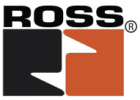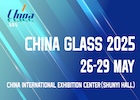The new glass technology delivers improved drop protection and scratch resistance to the intermediate and value-segment smartphone market.
CORNING, N.Y. —Corning Incorporated (NYSE:GLW) today announced the launch of Corning® Gorilla® Glass 7i, a new cover glass engineered to deliver improved durability for intermediate and value-segment mobile devices. Gorilla Glass 7i broadens Corning’s renowned tough cover glass portfolio, offering better drop and scratch performance compared to competitive lithium aluminosilicate glasses from other manufacturers.
“Durability remains a primary concern for anyone with a mobile device,” said David Velasquez, vice president and general manager, Corning® Gorilla® Glass. “Purchasing a smartphone is a significant investment, and Gorilla Glass 7i allows more consumers to protect their purchase by providing advanced toughness for value and intermediate devices at an affordable price point.”
In Corning lab tests, Gorilla Glass 7i survived drops of up to one meter on surfaces replicating asphalt. Competitive lithium aluminosilicate glass from other manufacturers typically failed when dropped from half a meter or less. Additionally, Gorilla Glass 7i is up to two times more scratch resistant than competitive lithium aluminosilicate cover glasses.
“We remain committed to helping our customers solve their toughest technological challenges across all market segments – from entry-level phones to their premium flagship devices,” Velasquez said. “Gorilla Glass 7i is the latest example of Corning’s vital role in developing glass technology that helps meet the evolving needs of every consumer.”
OPPO Mobile Telecommunications Corp., Ltd will be the first customer to adopt Gorilla Glass 7i.
Gorilla Glass has been designed into more than eight billion devices by more than 45 major brands. Corning continues its legacy of innovation for Mobile Consumer Electronics with its market-leading cover glasses as well as glass and optics for semiconductor products that enhance performance, deliver new connectivity features, enable new designs, and support immersive user experiences with augmented reality and 3D sensing.



























